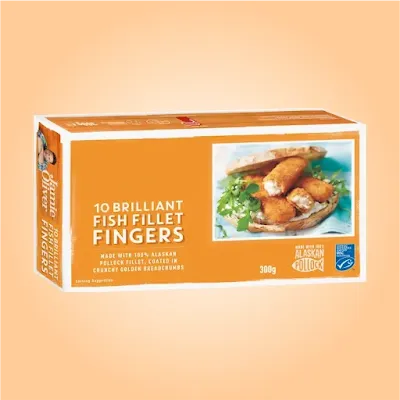In the world of seafood, freshness and presentation are paramount, and custom fish fillet boxes emerge as indispensable allies in preserving the quality of these delicate treasures from the sea. Beyond serving as mere containers, these bespoke packaging solutions play a crucial role in ensuring the pristine condition of fish fillets while also contributing to the brand identity and consumer experience. In this article, we explore the key features and advantages of custom fish fillet boxes, shedding light on their design versatility, branding potential, and the vital role they play in delivering fresh, delectable fish to consumers.
The Art of Preservation
Tailored for Freshness
Custom fish fillet boxes are designed with the preservation of freshness as a top priority. These boxes can be tailored to accommodate the specific size and shape of fish fillets, providing a snug fit that minimizes movement during transport. This tailored approach ensures that the fillets remain intact, preventing damage and maintaining their optimal quality.
Temperature Regulation
Preserving the cold chain is crucial in seafood packaging. Custom fish fillet boxes can incorporate insulating materials to regulate temperature and extend the freshness of the fillets. This feature is especially vital for long-distance transportation, ensuring that the fish reaches its destination with its texture and flavor intact.
Branding Through Quality
Reinforcing Quality Assurance
Custom packaging becomes a powerful tool for conveying a brand's commitment to quality. Incorporating elements such as the brand logo, color scheme, or even quality assurance messages on the fish fillet boxes instills confidence in consumers. This transparency reinforces the brand's dedication to delivering premium, fresh seafood products.
Enhancing Perceived Value
Well-designed packaging contributes to the overall perceived value of the product. Custom fish fillet boxes with attention to detail, such as secure closures and clear labeling, create a positive impression. This attention to packaging elevates the consumer's perception of the product, positioning it as a high-quality offering.
Practical and Sustainable Design
Optimal Material Usage
Custom fish fillet boxes can be crafted with efficiency in mind, using materials that strike a balance between durability and environmental responsibility. Minimalistic designs and optimal material usage contribute to reducing waste while maintaining the structural integrity of the packaging.
Eco-Friendly Options
Embracing eco-friendly materials aligns with the growing demand for sustainable practices. Custom fish fillet boxes can be made from recycled or biodegradable materials, showcasing a commitment to environmental responsibility. This eco-friendly approach not only appeals to environmentally conscious consumers but also positions the brand as a steward of marine ecosystems.
Ensuring Consumer Convenience
Easy Handling and Storage
Custom fish fillet boxes can be designed for easy handling and storage, with features like stackability and ergonomic handles. This practical approach not only facilitates efficient transportation for retailers but also enhances convenience for consumers when storing the fillets at home.
Clear and Informative Labeling
Well-designed custom packaging includes clear and informative labeling. Details such as the type of fish, fillet weight, origin, and cooking instructions contribute to a positive consumer experience. This transparency builds trust and allows consumers to make informed choices about the seafood they purchase.
Conclusion
Custom fish fillet boxes are integral to the seafood industry's commitment to delivering fresh, high-quality products to consumers. Beyond their functional role in preservation, these bespoke packaging solutions serve as ambassadors of brand identity and quality assurance. As the seafood market continues to evolve, the significance of custom fish fillet boxes becomes increasingly vital in ensuring the delivery of delectable, fresh fillets while simultaneously contributing to sustainable and consumer-friendly packaging practices.



